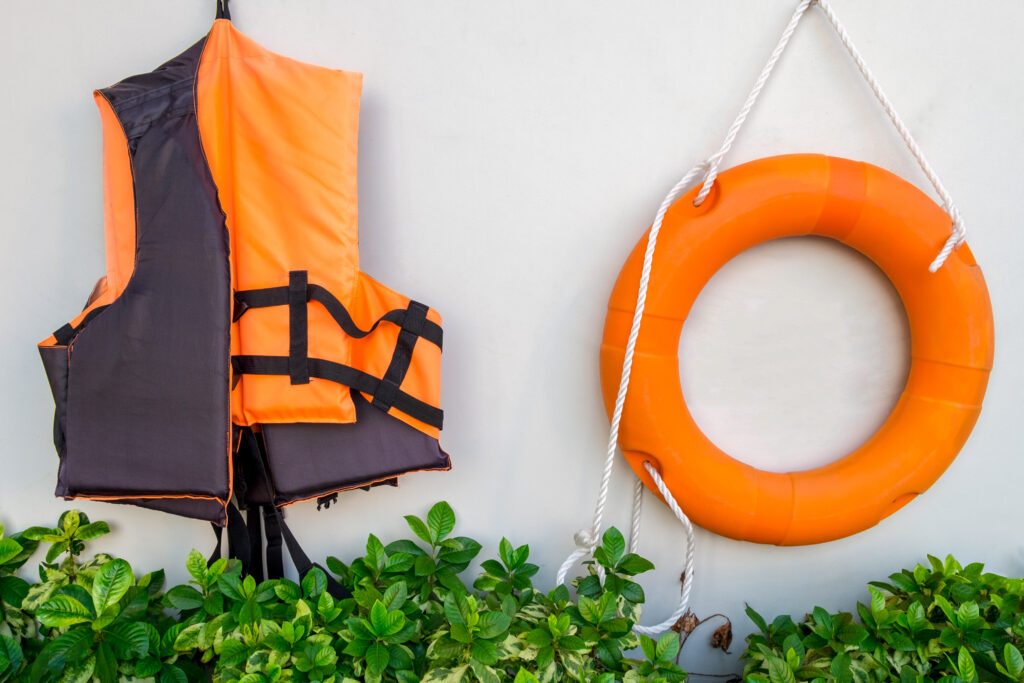Swimming Pool Safety Tips
Swimming pools are a popular source of fun, relaxation, and exercise during the summer months. However, it’s crucial to prioritize safety to prevent accidents and ensure a safe environment for everyone. Whether you’re a pool owner or a visitor, implementing proper safety measures is essential. In this article, we’ll discuss some important swimming pool safety tips that everyone should be aware of.
Supervision is Key
One of the most critical safety measures around swimming pools is providing constant supervision, especially when children are present.
Designate a responsible adult as the “water watcher” to keep a keen eye on swimmers and stay vigilant at all times. Remember, accidents can happen in an instant, so it is essential to maintain direct and focused supervision.
Kawata (2023) tells us bright, vibrant colors such as neon pink, orange, and yellow significantly enhance visibility, making it easier to keep track of children in and around water. Conversely, they advise against colors like white, blue, black, and gray, which can easily blend with water and may obscure a child’s presence when submerged.

Install Safety Barriers
Installing appropriate safety barriers around the pool area is crucial, especially if you have children or pets. A pool fence with a self-latching gate provides an extra layer of protection by preventing unauthorized access to the pool.
Ensure the fence is at least four feet high and that there are no gaps or spaces that a child or pet could squeeze through. Remember to keep any objects that may aid in climbing, such as chairs or toys, away from the fence.
Also, keep up with pool repairs. This is an area we can help with. Go to our Pool Repairs Service Page.

Teach Swimming and Water Safety
Enrolling children and adults in swimming lessons is an excellent way to improve water safety. Swimming lessons can teach essential skills, such as floating, treading water, and proper swimming techniques, which greatly reduce the risk of drowning.
Additionally, educating yourself and others about water safety practices, like the dangers of running near the pool or diving in shallow water, is essential.
Establish Pool Rules
Establishing and enforcing pool rules is an effective way to enhance safety. Some common rules include no diving in shallow areas, no running or pushing near the pool, and no swimming without adult supervision.
Post these pool rules in a visible location near the pool. Regularly remind family members or guests of these rules to keep safety a priority.
Learn CPR and First Aid
Knowing CPR (Cardiopulmonary Resuscitation) and basic first aid techniques are crucial in a water emergency.
It is beneficial to have at least one person present who is trained in CPR whenever the pool is in use. Many organizations offer CPR and first aid courses, ensuring that you have the necessary skills to respond promptly and appropriately during a critical situation.
Swiftwater Rescue restated a statistic from a publication titled, “Resuscitation” (n.d.) of the 90 cases of bystander CPR by lay-persons on removal from the water 82 survived. This is a 91% survival rate. Conclusions: Bystander rescue and resuscitation play a critical role in the survival of drowning.
Secure Pool Chemicals
Keep pool chemicals, such as chlorine, out of the reach of children and pets. Store these chemicals in a locked area or a high shelf to prevent accidental ingestion or exposure. It’s also essential to follow the manufacturer’s instructions for handling and storing pool chemicals properly to minimize any potential risks.
Use Safety Equipment
Having appropriate safety equipment near the pool is essential. These can include life jackets, reaching poles, rescue hooks, and a first aid kit. Ensure that everyone knows the location of these items and how to use them in an emergency. A well-equipped poolside can greatly aid in prompt response and potentially save lives.

Regular Maintenance and Inspections
Regular maintenance and inspections of your pool are crucial for ensuring safety. Keep the pool water clean and properly balanced to minimize the risk of waterborne illnesses.
Inspect pool equipment, such as ladders, diving boards, and pool covers, regularly to ensure they are in good condition and functioning correctly. Address any issues or pool repairs promptly. Check out our Pool Maintenance Service Page.
Conclusion
Swimming pool safety should never be taken lightly. By following these essential tips, you can create a safe and enjoyable swimming environment for everyone. Remember, supervision, barriers, swimming lessons, and establishing pool rules are fundamental steps.
Additionally, knowing CPR and first aid, securing pool chemicals, utilizing safety equipment, and conducting regular maintenance and inspections are imperative. By prioritizing safety, you ensure that your pool becomes a place of fun, relaxation, and lasting memories for years to come.
References:
Kawata, A. (2023, June 23). Did you know swimsuit color can impact water safety? CBS News. https://www.cbsnews.com/baltimore/news/swimsuit-color-and-water-safety-whats-the-best/
Swiftwater Rescue. (n.d.) Effectiveness of cpr in drowning victims. Swiftwater Rescue. https://www.swiftwaterrescue.at/content/info/cpr.html#:~:text=Of%20the%2090%20cases%20of,in%20the%20survival%20of%20drowning.
The featured image for this article was obtained through 123rf.com using this link:
https://www.123rf.com/profile_xixinxing’>xixinxing